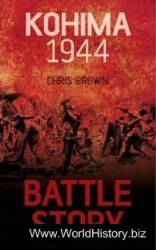In his analysis of the Old Regime on the eve of the French Revolution, Alexis de Tocqueville predicted the counter-culture of the 1960s and 1970s. Privileged citizens, benefiting from improved material lives, had rising social and cultural expectations. Relative stability and prosperity encouraged increasing demands. The political moderation that supported stability and prosperity came under attack for its very moderation. This is precisely what Tocqueville meant when he pointed to the perils of reform after decades of war and deprivation. The promise of a better life encouraged growing demands among an educated generation of men and women that gradual social improvement could not sustain. Suburban wives had much more than their mothers, but it was not enough. West German students lived more secure lives than their parents, but it was not enough. Soviet laborers had better working conditions
The penetrating phrase "present at the creation” comes, of course, from Dean Acheson’s memoirs: Present at the Creation: My Years in the State Department (New York: W. W. Norton, 1969).
17 See Students for a Democratic Society, The Port Huron Statement (New York: Students for a Democratic Society, 1962), esp. 1-9; Todd Gitlin, The Sixties: Years ofHope, Days of Rage (New York: Bantam, 1987); Paul Berman, A Tale ofTwo Utopias: The Political Journey of the Generation of 1968 (New York: W. W. Norton, 1996).
Than their predecessors, but it was not enough. Citizens blamed their leaders, not their unrealistic expectations, for the limits in their lives.697
These popular frustrations were not only a reaction to the Cold War. They were inspired by Cold War rhetoric and encouraged by Cold War leaders - often the same figures the counter-culture would later attack. The Soviet premier, Nikita Khrushchev, offers the best example of this dynamic. In his famous "secret speech" of February 1956, he exposed the horrors of Stalinist rule in the Soviet Union and legitimized freer public expression. Khrushchev explained that the fear and terror of prior years, accompanied by a vicious Stalinist "cult," were "a serious obstacle in the path of Soviet social development."698 Excessive repression had undermined Communist ideals and it had weakened the Soviet Union in its competition with the United States. Losing its best minds to the Gulag, Moscow could not hope to match Western creativity. The Soviet Union needed to encourage limited new freedoms for the sake of Cold War competition.
Following this logic, Khrushchev temporarily opened up the Communist system, encouraging more innovation and achievement. He disbanded the Gulags, sending prisoners home with amnesty so they could contribute to society. He created new "science cities" where scholars could conduct research with generous resources and freer access to information than they enjoyed before. Most significant, Khrushchev allowed authors, such as Aleksandr Solzhenitsyn, to publish literature that he believed would discredit the Stalinist past and inspire new hope. "In the last years," Khrushchev explained, "when we managed to free ourselves of the harmful practice of the cult of the individual and took several proper steps in the sphere of internal and external policies, everyone saw how activity grew before their very eyes, how the creative activity of the broad working masses developed, how favorably all this acted upon the development of economy and culture."699 Khrushchev promised that his program of openness - "the thaw," as many referred to it - would produce the first truly Communist society. It would "erase the essential distinctions between town and country and later on between mental and physical labor."700
Khrushchev’s policies allowed more freedom for Soviet citizens, and they catapulted popular expectations. He expected to strengthen Soviet rule through these means. Instead, he nurtured a dissident counter-culture. Free of Stalinist terror, citizens could congregate and share their criticisms of the regime. They could organize low-level resistance, often by refusing to follow orders or dropping out of mandatory activities. Most troublesome for Khrushchev and his colleagues in the Kremlin, citizens felt empowered to question the basic legitimacy of the regime. Solzhenitsyn, the former Gulag prisoner whose writing Khrushchev initially approved for publication, made the Gulag into a metaphor for the Soviet Union as a whole. One of Solzhenitsyn’s protagonists, Ivan Denisovich Shukhov, employed the existential language that became a hallmark for the counter-culture, and its attacks on leaders like Khrushchev:
Shukhov stared at the ceiling and said nothing. He no longer knew whether he wanted to be free or not. To begin with, he’d wanted it very much, and counted up every evening how many days he still had to serve. Then he’d got fed up with it. And still later it had gradually dawned on him that people like himself were not allowed to go home but were packed off into exile. And there was no knowing where the living was easier - here or there. The one thing he might want to ask God for was to let him go home. But they wouldn’t let him go home.701
The public circulation of Solzhenitsyn’s One Day in the Life of Ivan Denisovich, and the enormous attention that it drew, inspired countless other attacks on Soviet authority from scientists, students, and ordinary citizens. Zhores Medvedev, a Soviet biologist who criticized the regime, called Solzhenitsyn’s writing "a literary miracle" that had "everybody" talking.702 "It has become clear," one reader of Ivan Denisovich explained in 1962, "that since the appearance of Solzhenitsyn’s book we will never again be able to write as we have done till now."703
The government-authorized publication of Solzhenitsyn’s book reflected the Cold War pressures on Khrushchev to encourage creativity and some public openness. The reception of the book, however, undermined Khrushchev’s purposes - namely the protection of his authority and the strengthening of the Communist system. Cold War politics, in this sense, created a contradictory Cold War culture. The attempt to assure power through openness undermined power. The pressures on leaders to encourage innovation undermined leaders. International Cold War competition created space for the emergence of widespread dissent, even in Communist societies.
Khrushchev’s predicament was emblematic, but hardly unique. In West Berlin - the strategic center for Soviet-American conflict - a similar dynamic took shape. At the end of World War II, the United States and the newly created Federal Republic of (West) Germany collaborated to sponsor a selfconsciously democratic school: the Free University. Unlike its German counterparts, this institution encouraged student governance. It also emphasized experimental courses and approaches to teaching. The Free University set a new model for post-Fascist education in Germany, and it also served as a showcase for the freedom and dynamism that the sponsoring governments intended to display in West Berlin. The Free University was part of a cultural "magnet" strategy, designed to encourage citizens living under repressive Communist rule to embrace liberal-capitalism. In the unique context of West Berlin - where citizens from the Eastern and Western halves of the city could interact before the construction of the Berlin Wall in August 1961 - this involved the direct attraction of East German men and women through the Free University. Between 1949 and 1961, more than a third of the students attending the institution were citizens of the Communist state.704
Democratic education at the Free University helped to subvert Communist authority. The freedom and wealth on display in this institution convinced disgruntled East Germans - particularly the young and ambitious - to defect to the West. In the late 1950s, more than one hundred Communist citizens fled to the Federal Republic each day. Many of them were enrolled at the Free University.705
The most famous of these student refugees was Rudolf "Rudi" Dutschke. He came from the East German province of Brandenburg. The Communist government had barred him from higher education when he refused to participate in mandatory military service during the late 1950s. As a consequence, Dutschke attended the Free University - the only post-secondary institution from which he was not barred. In 1961, he fled to West Berlin, continuing his studies in sociology, philosophy, and political science at the Free University.706
Dutschke’s defection was a Cold War victory for the West, but it also produced a profound challenge to Cold War policy. By the second half of the 1960s, he became a leader of student protests against the West German government, American influence, and what he called the elements of "Fascism" built into capitalist democracy. He condemned the Federal Republic’s conservative political culture, its support for repressive foreign regimes (especially the shah’s monarchy in Iran), and Bonn’s association with the brutal American war in Vietnam. In his diary, Dutschke expressed his desire to create a "third front," a counter-culture, to challenge dominant capitalist and Communist authorities.707 Mao Zedong, Che Guevara, and idealized images of brave Vietnamese peasant fighters became inspirational symbols for a revolution against not just political institutions, but the basic organization of society. Dutschke proclaimed an "historic opening" for a global "emancipatory struggle and national self-determination."708
Dutschke’s words articulated the frustrations of many young educated citizens throughout Western Europe who wanted more idealism and less association with Cold War ventures in Vietnam and other places. In February 1968, ten thousand people from various American-allied countries attended a student-organized "Vietnam Congress" at the Free University, designed to mobilize participants for "solidarity" and "revolutionary struggle."709 Public protests spread throughout the continent, employing the “third front” rhetoric of Dutschke and others.710
In the United States public demonstrations focused on Vietnam and civil rights, but they also employed the attacks on Cold War “imperialism” and “Fascism” that motivated the counter-culture in Western Europe. Antiwar protesters on university campuses throughout America looked to Third World revolutionaries for examples of “liberation.” Advocates of Black Power took inspiration from nationalist movements in Africa that attacked the foreign and domestic “colonialism” of white rule. Dutschke’s “third front” became the solution of choice for citizens struggling with the frustrations of unfulfilled expectations during a decade of unprecedented social improvements.
Herbert Marcuse, a German emigre to the United States who became one of the most recognized philosophers of the counter-culture, captured this common revolt against Cold War authority. He described what he perceived as the “genuine solidarity” among “young radicals” that drew its “elemental, instinctual, creative force” from guerrilla fighters in the Third World and the Chinese Cultural Revolution, not the traditional centers of influence. Western claims of progress had, according to Marcuse, lost their popular appeal.711
For all the violence in Vietnam and other parts of the Third World, the international system had become more stable and less prone to nuclear crisis in the 1960s. For all the continued racism in America and other societies, laws and attitudes had, in fact, changed in powerful ways to protect traditionally disenfranchised groups. This was significant progress, encouraged by Cold War competition. In their desire to make their societies stronger, more creative, and more attractive, leaders worked to make their societies better. Promises of reform in this ideologically overheated environment, however, mobilized citizens beyond the aims of their leaders. Solzhenitsyn’s readers, Dutschke’s followers, and Marcuse’s radicals were empowered by the Cold War reforms they condemned as insufficient. The Cold War provided space for the counterculture in universities, in public literature, and in other social settings. It even encouraged a counter-culture that showcased freedom and creativity.712
By the end of the 1960s, creativity had turned to revolt in nearly every major state. The countries most deeply penetrated by the Cold War confronted pervasive dissent and disaffection, especially among the young. Attempts by leaders to mobilize their publics for domestic reform and international competition had produced spiraling domestic contention and aspirations to international solidarity among critics. The Cold War had globalized a set of ideological debates, and now a cohort of ideological dissidents.713




 World History
World History









